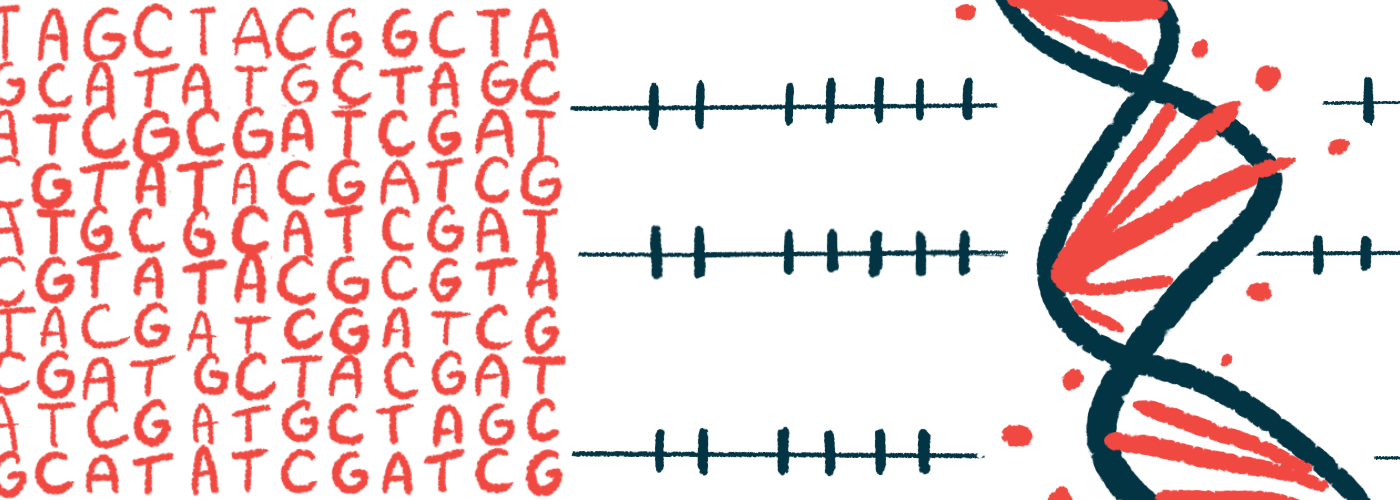Targeted NGS Seen as Best When Screening for SMA and Its Carriers

Targeted next generation sequencing (NGS) — a powerful genetic method that can identify mutations in several genes simultaneously — is superior to two commonly used genetic tests for the screening of spinal muscular atrophy (SMA), a study shows.
These findings highlight targeted NGS as a reliable and promising approach for SMA screening, particularly in identifying disease carriers, the researchers noted.
The study, “Next generation sequencing is a highly reliable method to analyze exon 7 deletion of survival motor neuron 1 (SMN1) gene,” was published in the journal Scientific Reports.
Nearly all SMA cases are caused by the complete loss of exon 7 in both copies of the SMN1 gene — one inherited from the mother and one from the father. Exons are the sections of a gene that contain the information to generate proteins.
Detecting the loss of exon 7 in both SMN1 gene copies is an effective way to screen for and confirm an SMA diagnosis, while the presence of only one mutated copy can identify carriers.
These carriers — 1 in every 50 people across ethnicities — are not affected by the disease, but they can pass the faulty gene along to their children. Identifying carriers is essential for proper genetic counseling of adults who are planning families.
NGS, a large-scale DNA sequencing technique that allows the analysis of a person’s genome (all genetic information) can also be targeted to a specific gene, multiple genes, and specific regions of the genome.
As such, the technique has gained interest for expanded carrier screening. With NGS, a panel of more than 200 disease-associated genes can be analyzed at the same time, reducing time and costs, as well as the associated error rates of multiple individual tests.
While previous studies have reported the use of targeted NGS for SMA carrier screening, “a comprehensive performance analysis and comparison has not been reported,” the researchers wrote.
A team in China compared the performance of targeted NGS in detecting the number of SMN1’s exon 7 copies to those of the gold-standard method known as multiplex ligation probe amplification (MLPA) and the frequently used, low-cost and real-time quantitative polymerase chain reaction (qPCR) test.
MLPA, which assesses the copy number of genes and individual exons, can look at several sites at the same time, while each qPCR reaction can only look for a single gene or mutation.
The team evaluated each test’s sensitivity, specificity, and precision.
Sensitivity refers to a test’s ability to correctly identify those with a given disease, while specificity refers to correctly identifying those without it. Precision comprises the ratio of the number of correct positive predictions relative to all the positive cases.
A total of 478 DNA samples that had previously been tested for exon 7 copy number using any of the three tests were acquired from hospitals across China and re-analyzed.
Sixteen were from SMA patients with homozygous (in both SMN genes) deletion and 74 from relatives with one healthy SMN1 copy, classified as carriers. The remaining 388 samples were from people without SMA symptoms and no family history information; of them, 59 had been classified as carriers under at least one of these three testing methods.
Targeted NGS focused on a pre-selected panel of 234 disease-associated genes that included SMN1, while MLPA and qPCR analyzed the SMN1 gene alone.
Taking MLPA-based results as a reference, which were consistent with previous results, NGS’s sensitivity, specificity and precision were all 100%, highlighting a comparable accuracy to this gold standard approach.
qPCR showed the poorest performance. The test was more reliable when analyzing samples from people with a normal SMN1 copy number (94.3% sensitivity, 100% for both specificity and precision), and less accurate when analyzing those from carriers (97.5% sensitivity, 95.5% specificity, and 88.7% precision).
When assessing the reproducibility of NGS and qPCR by retesting 71 samples three times, the team again found NGS to be superior to pPCR.
Specifically, 86.2% of samples with two of more SMN1 copies were tested successfully and accurately in all three replicates with NGS, while this rate dropped to 48.3% with qPCR. Similar reproducibility between tests was observed for samples with no and one healthy SMN1 copy.
Further analyses showed that NGS had the lowest retest rate (2.7%), which refers to the proportion of samples with unclear results that, in the clinical setting, would need to be re-analyzed. The retest rate was 6.7% with MLPA and 5% with qPCR.
These differences suggest that NGS has lower requirements of DNA quality relative to the other two methods, the team noted.
These findings highlight targeted NGS “as a fairly reliable method and would be the most promising method for carrier screening of SMA caused by SMN1 exon7 deletion,” the researchers wrote.
They also noted that targeted NGS (for more than 200 genes) was four to seven times more expensive than the other two tests, while qPCR was the cheapest method.
“However, under the condition of [expanded carrier screening], if cost is divided equally for each disease, the reagent cost of NGS method is the least expensive,” the researchers wrote.








